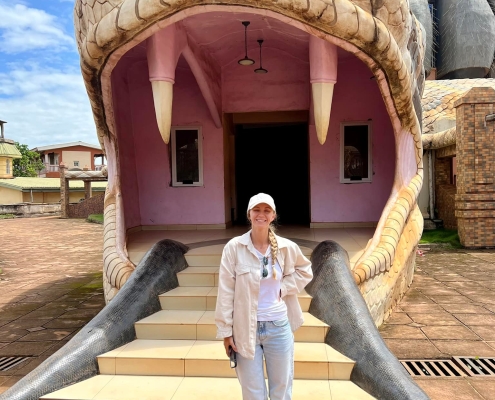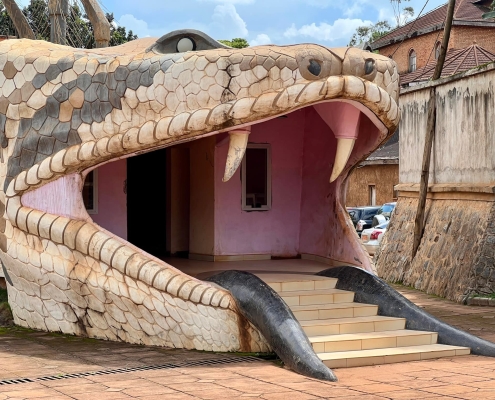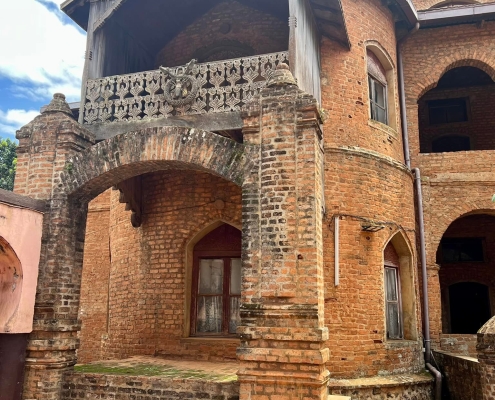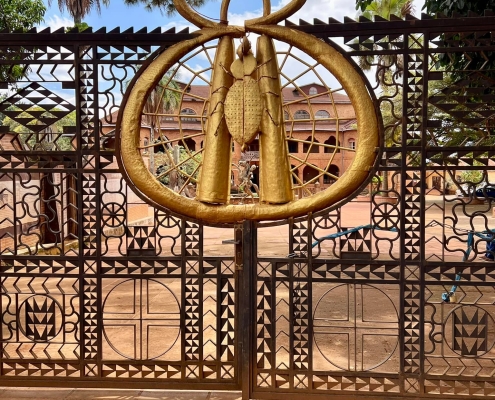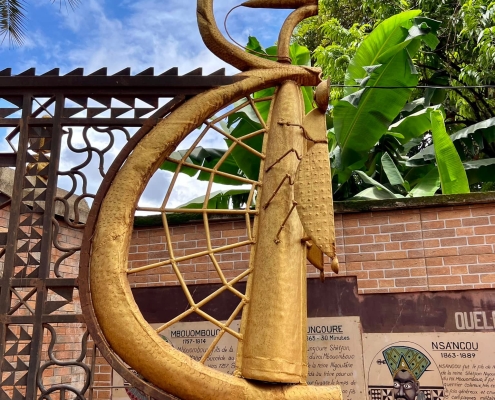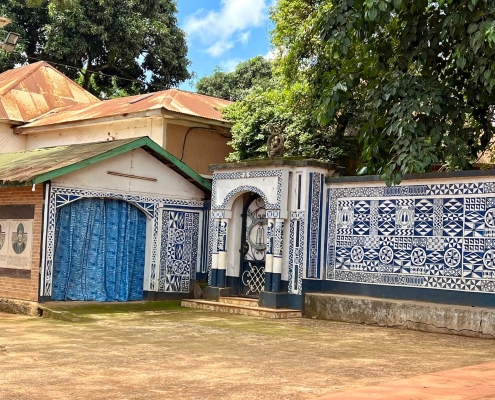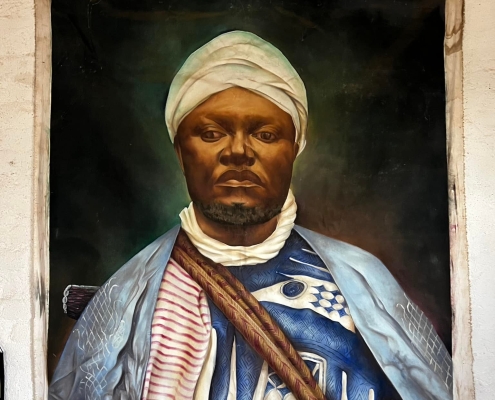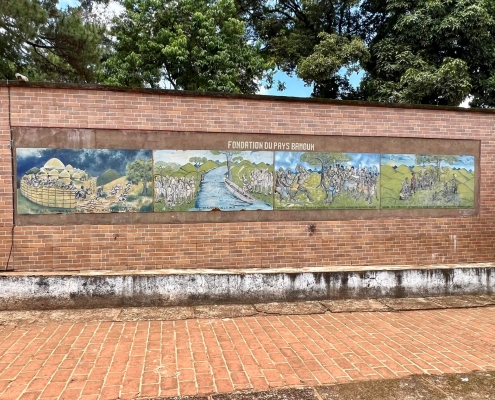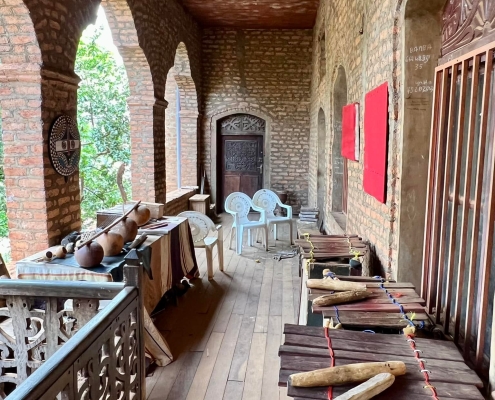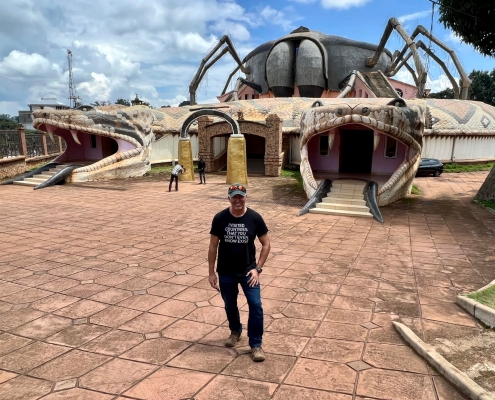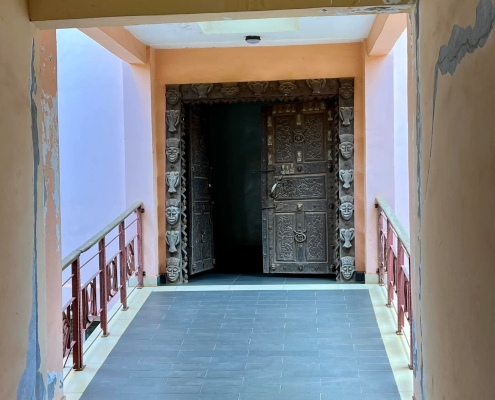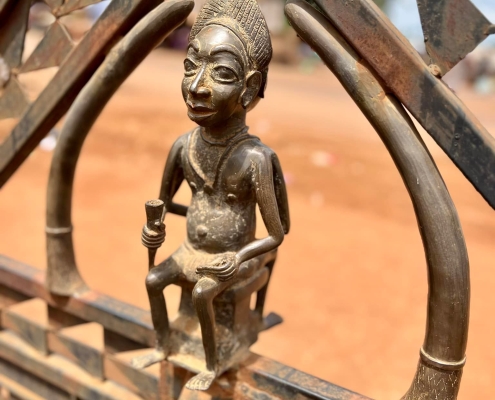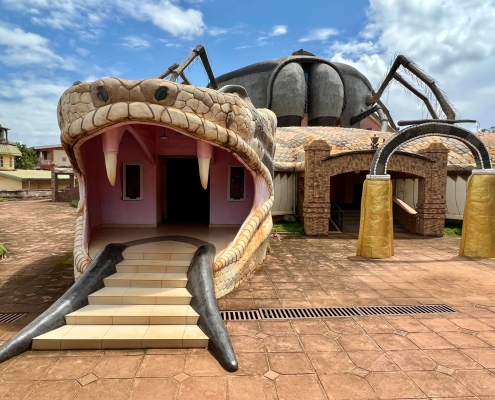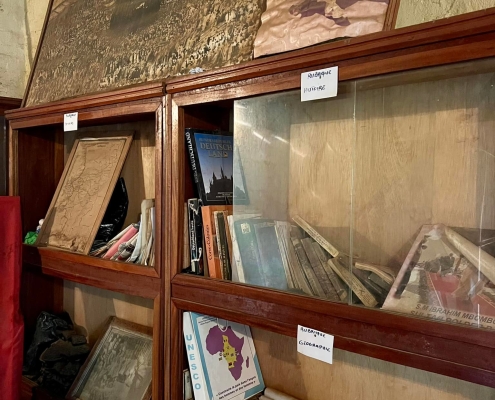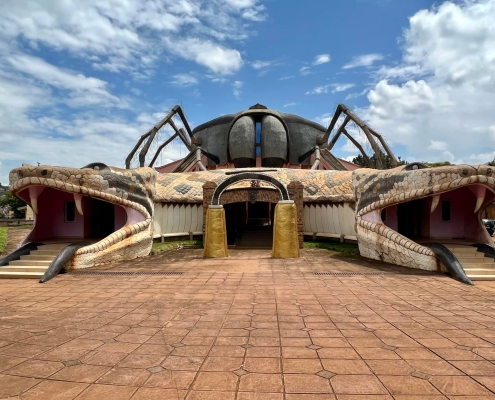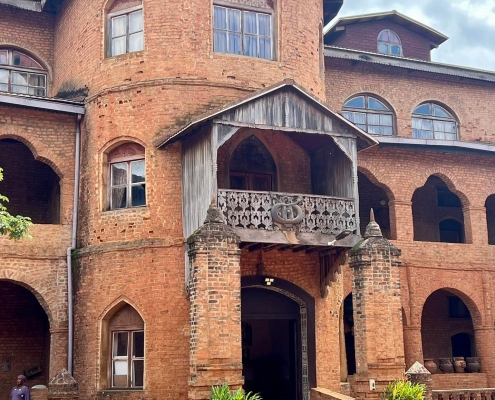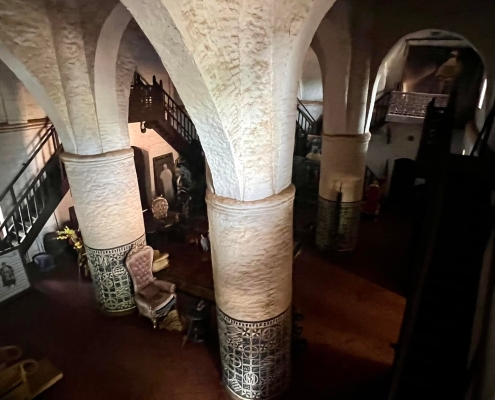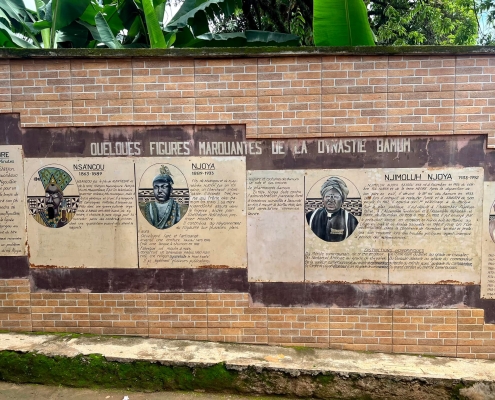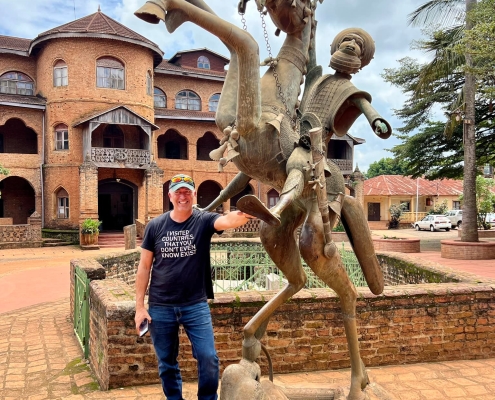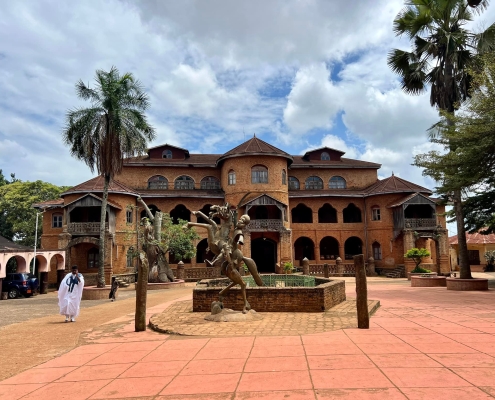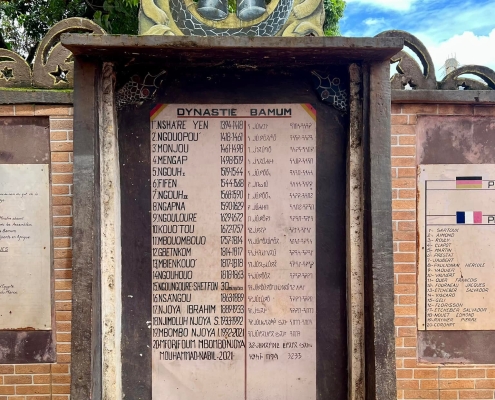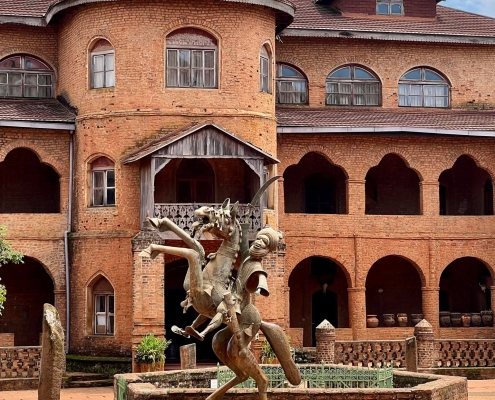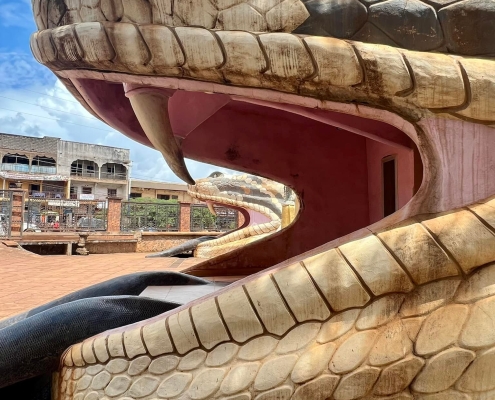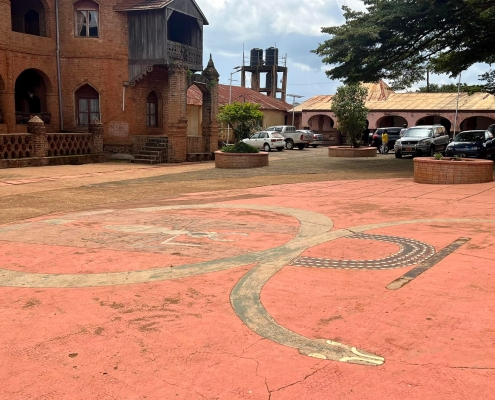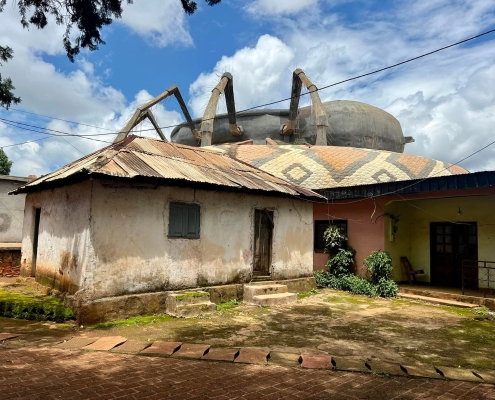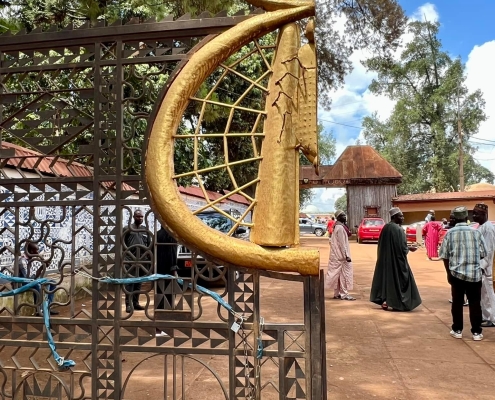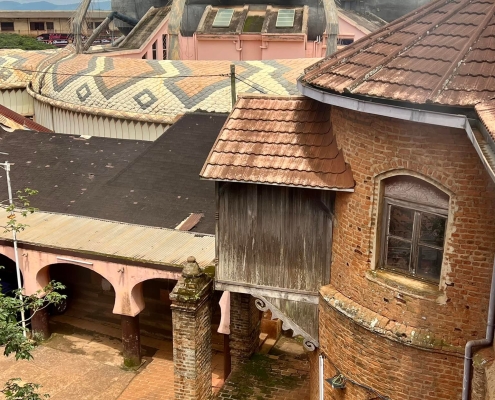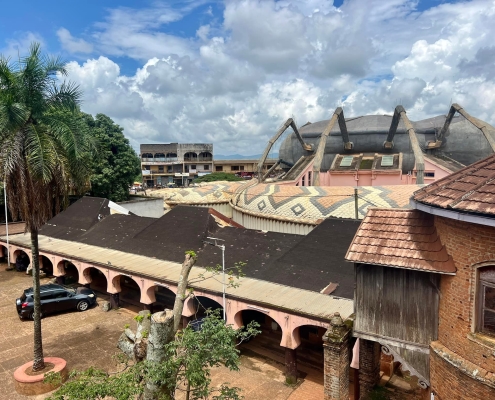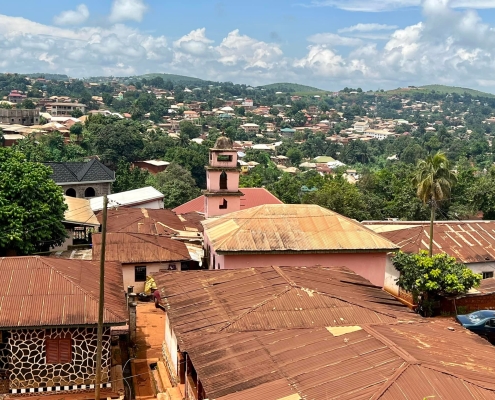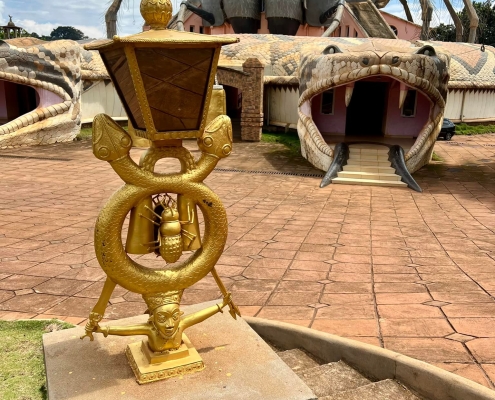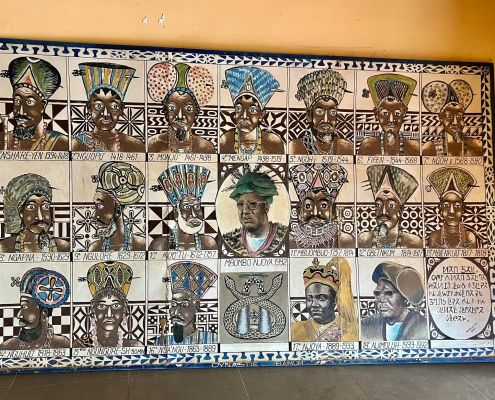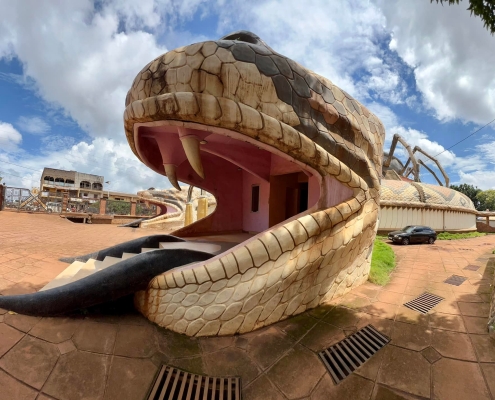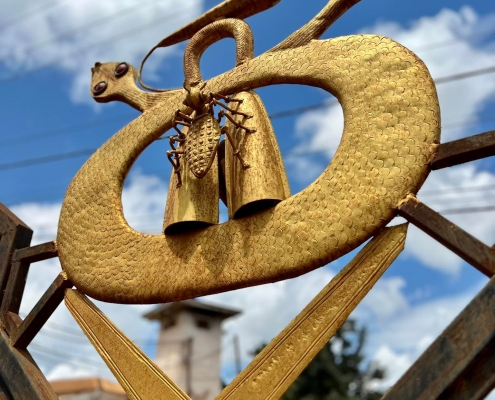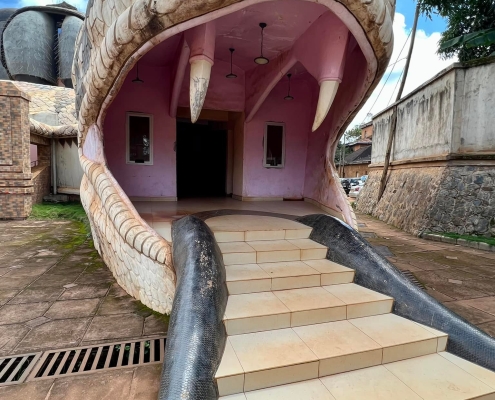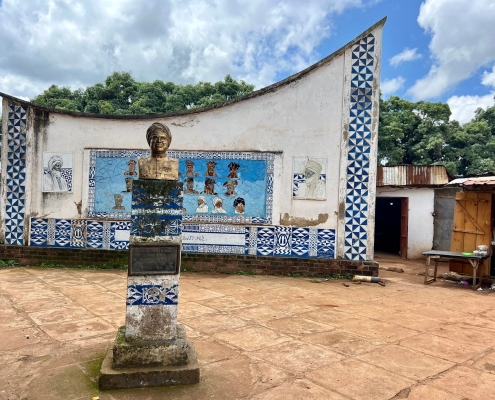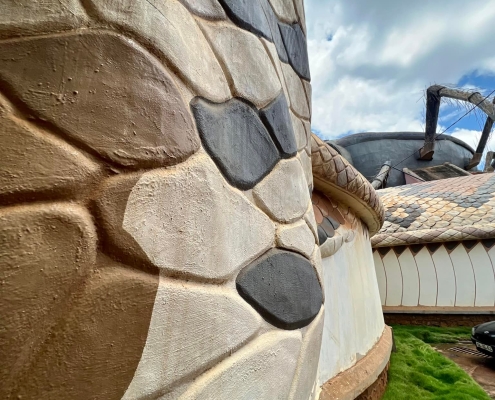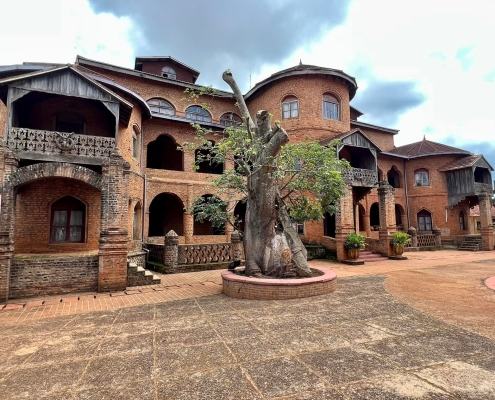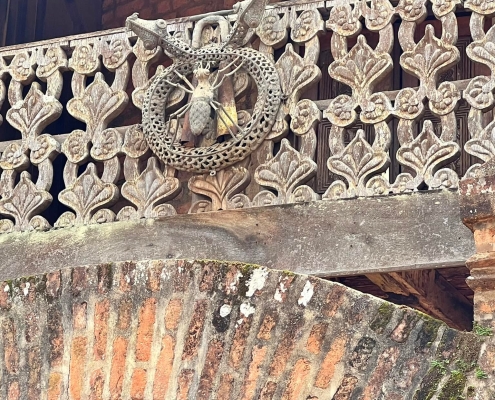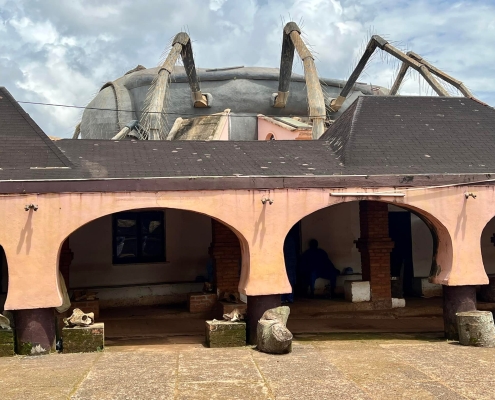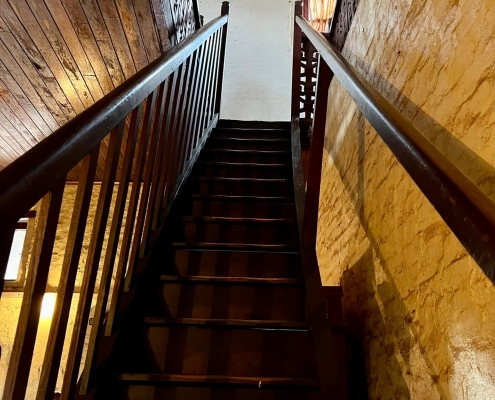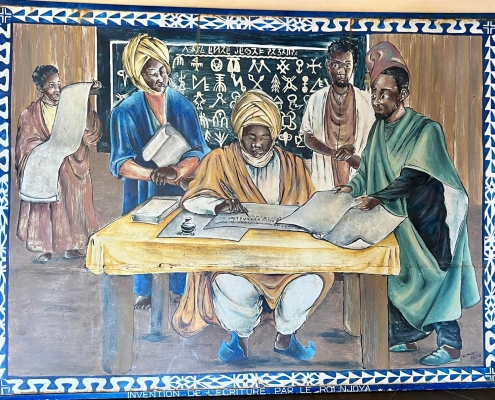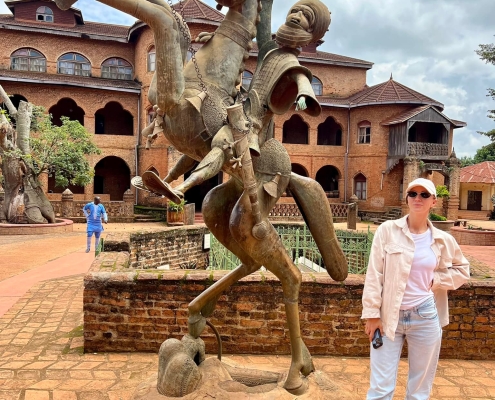Cameroon: Foumban – Sultan of Bamaun Palace
Foumban is one of the most famous cities in Cameroon, dating back to 14th century and the seat of the Soultan of Bamaun. The Bamoun Dynasty was founded in the 1394 and grew to one of the most powerful kingdoms in the 15-16th century in Central Africa, lying on the major north south and east west trade routes. Bamaun was always quasi-sovereign even under the German colonial rule, and the sultan exercised great power. The most famous sultan was Ibrahim Njoya who ruled from 1886 to 1933, and built a spectacular traditional grand palace in Foumban in 1917. The palace is now partially a museum (no photography allowed) displaying a lot of masks, clothing, thrones, and other very unique royal attributes. The sultan himself was a very colorful figure – he became sultan at the age of 4 (his mother ruled until he was 11), he supposedly had 685 wives and around 150 children. While Bamaun were mostly embracing Islam at the beginning of his reign, he soon switched the nation to Christianity after realizing Islam doesn’t allow alcohol (and the sultan did). Christianity also became problematic given prohibition of polygamy, so the sultan invited his own religion that allowed both alcohol and polygamy. Ibrahim Njoya also invented Bamuan alphabet and script that initially had over 600 characters but later was reduced to 86. Nice to be the sultan! The museum is mostly dedicated to his life and a lot of traditional Bamuan culture. Also, right across from the palace is a brand new museum (still unfinished) built in the shape of two snake and a spider – both symbols of Bamuan. Bamuan is still a sultanate and pretty much a state within a state in Caneroon.

